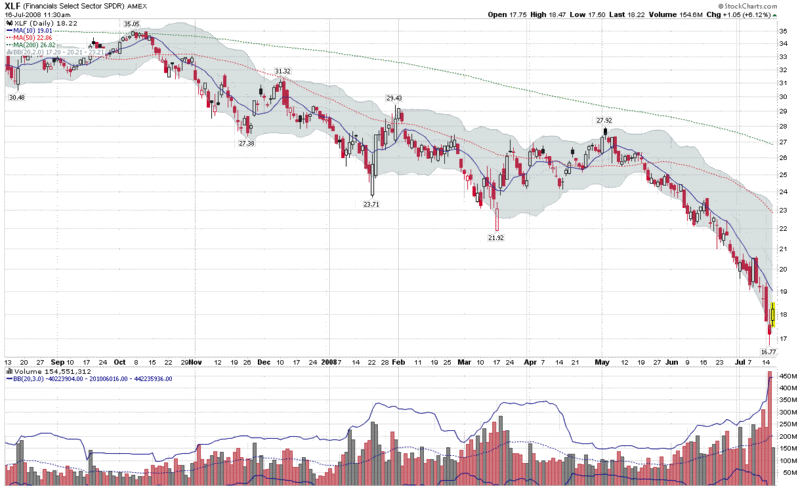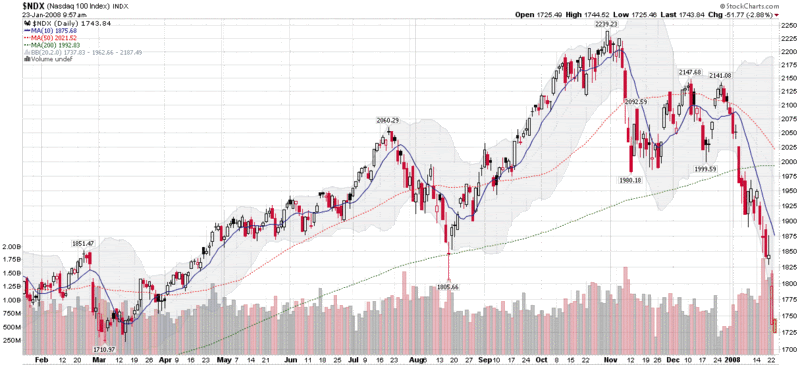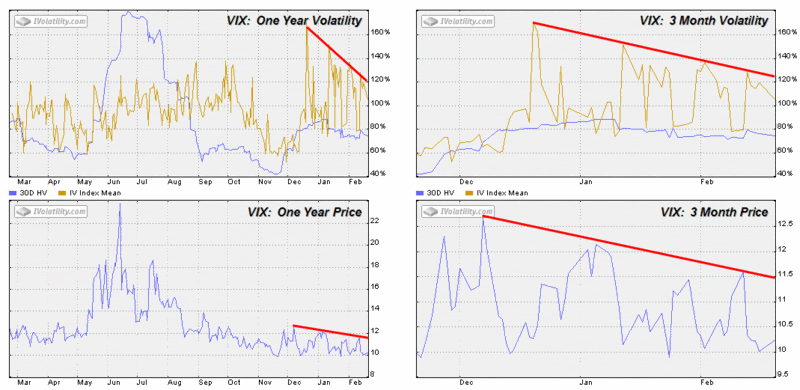The Possibility of a ‘Stealth Bottom’
The more I hear about the need for some sort of dramatic capitulation to affirm that a bottom has been made, the less likely I think it is going to happen. Instead, my thinking is that the longer and steeper the bear market, the more likely that any sort of capitulation will happen in stages.
Frankly, I find a scenario like the 2002 NASDAQ bottom to be a better template for a bottoming in the current market environment than most of the other possibilities that have been discussed. In VIX Spikes and the 2002 Market Bottom, I noted how the dot com bear market saw five VIX spikes of decreasing magnitude and ultimately found a bottom on a relatively small VIX spike and unremarkable volume. In short, it was a stealth bottom.
I would not at all be surprised to see the current bear market end in a similar stealth bottom. Sometimes a desensitized investment community is more likely to form a bottom than a panicky one.





